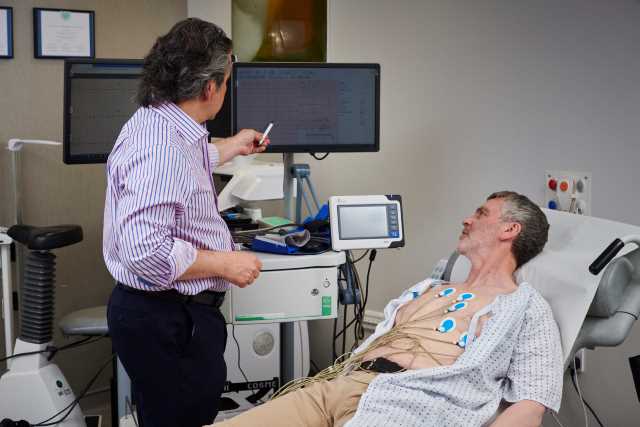Unsung Hero: Why the ECG is a Vital Role in Cardiovascular Health

Imagine the human heart as a maestro, conducting the grand orchestra of life with each rhythmic beat. But unlike a traditional maestro wielding a baton, our hearts rely on an intricate electrical symphony to orchestrate this vital performance. The electrocardiogram (ECG), much like a musical score, captures this hidden language, offering profound insights into the heart’s health and well-being.
Beyond the Squiggles: Unveiling the Heart’s Electrical Song
Picture tiny electrodes, akin to attentive audience members, strategically placed on your chest, limbs, and back. With each contraction and relaxation of the heart’s chambers, an invisible wave of electrical impulses ripples through its walls. These fleeting signals, imperceptible to the naked eye, are captured by the electrodes and translated into the iconic wavy lines of an ECG.
Each deflection on this graph, each peak and valley, holds a narrative. The P wave whispers the tale of atrial excitation, the QRS complex thunders with the ventricular activation, and the T wave echoes their recovery. Deviations from this expected pattern, like skipped beats or erratic rhythms, become visual metaphors, revealing potential arrhythmias, blockages, or even the silent scars of a past heart attack.
A Symphony of Insights: Decoding the Heart’s Hidden Messages
The ECG’s true power lies in its ability to act as a Rosetta Stone, translating the heart’s electrical language into actionable insights. This simple and painless test can:
- Unearth Hidden Rhythms: From the frenetic dance of atrial fibrillation to the unnerving stillness of bradycardia, the ECG can identify disruptions in the heart’s electrical conduction, unveiling hidden arrhythmias that might otherwise go unnoticed.
- Diagnose Silent Threats: Narrowed or blocked arteries, often silent assassins, can manifest as subtle changes on the ECG, potentially alerting healthcare professionals to the risk of impending heart attacks and allowing for timely intervention.
- Monitor the Healing Symphony: Whether it’s tracking the effectiveness of medications for arrhythmias or observing the delicate healing process after a heart attack, the ECG serves as a valuable conductor, guiding treatment decisions and ensuring the heart’s continued well-being.
Knowing When to Listen to Your Heart’s Melody:
While the ECG is a powerful diagnostic tool, its frequency depends on the individual’s unique composition. Generally:
- The Healthy Score: For individuals with no known heart conditions, the ECG might be included in routine checkups, typically at intervals determined by their healthcare provider.
- The Monitored Melody: Individuals with known heart conditions require regular ECG monitoring, as advised by their physician, to become familiar with their heart’s baseline rhythm and identify any potential variations that might signal trouble.
- The Unsung Chorus: Chest pain, palpitations, or shortness of breath often warrant an immediate ECG, acting as the first verse in the diagnostic story, helping healthcare professionals understand the underlying cause and compose the appropriate treatment plan.
Empowering Ourselves through Early Detection:
The ECG is more than just a technical diagnostic tool; it’s a profound testament to the intricate language of the heart. By understanding its insights and seeking timely evaluations when needed, we empower ourselves to become active participants in the grand symphony of our own health. Let us listen intently to the heart’s unsung ballad, composed in electricity, and ensure its harmonious rhythm continues to play on, beat after magnificent beat.




